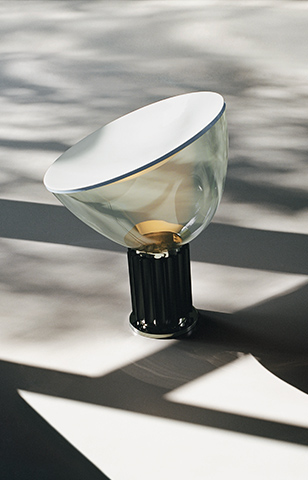DESIGN YOUR ALFRESCO SPACE



My Circuit: design your own path

Inside the Invisible House

Gustave, at your service


Taccia, the evolution of an icon
Crafted in 1962 with the simple idea of turning a ceiling light upside down, the Taccia table lamp by the Castiglioni Brothers has become an Italian design icon. Never losing relevance, it has evolved over the years with multiple different iterations. The latest model boasts a brand-new Matte White finish that only further enhances the essence of the original design.















































